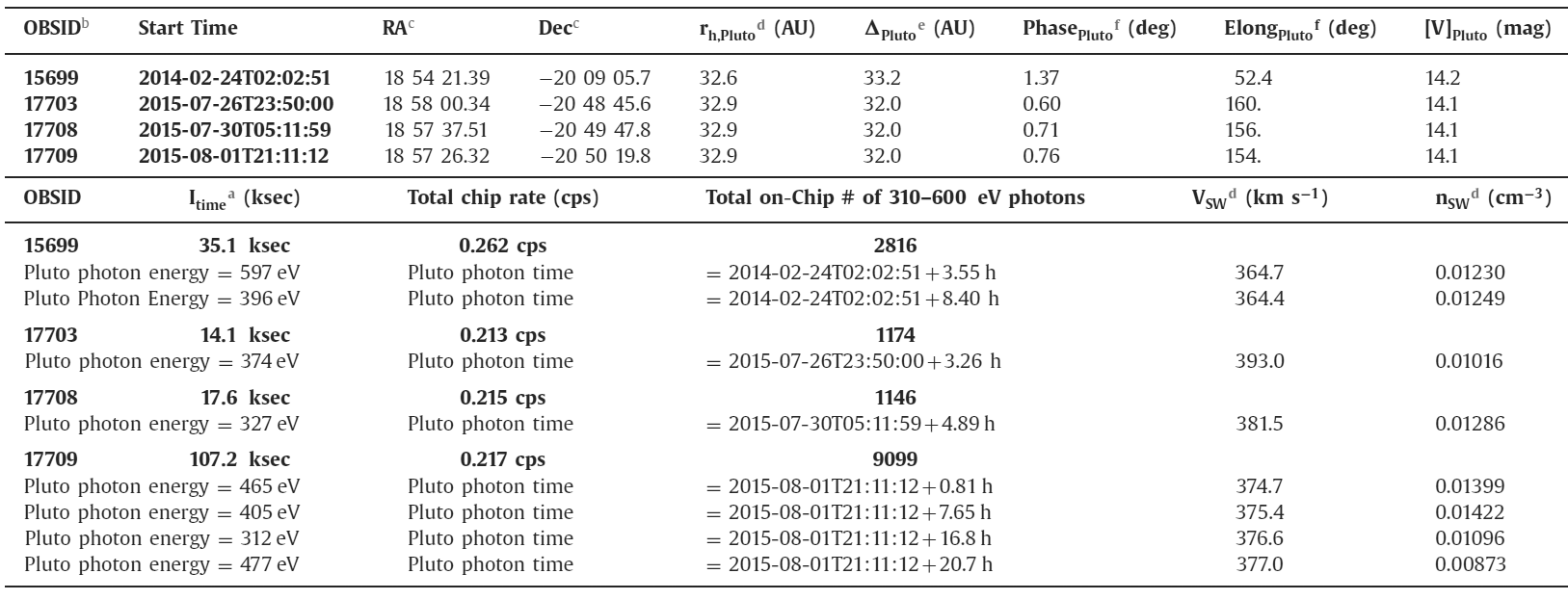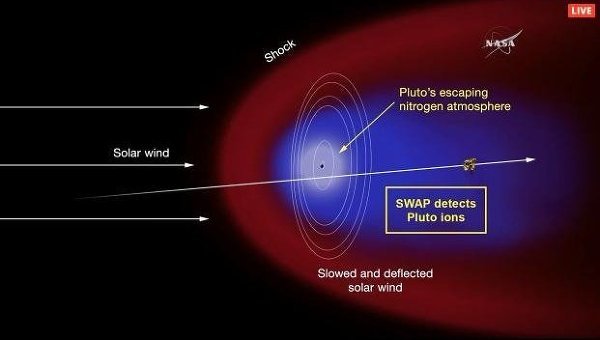Pluto somehow glows in the X-ray range

Astronomers working with the Chandra Space X-ray Observatory made a discovery: for some reason, the dwarf planet Pluto emits x-ray photons. This is the first object in the Kuiper belt, which found a similar property. The discovery is quite unexpected, because Pluto is a rocky ice body, which has not detected a magnetic field. It lacks the natural mechanisms for generating X-rays.
Astrophysicist Carey Lisse from Johns Hopkins University had a different opinion. It was he and his colleagues who, 20 years ago, first discovered X-rays from a flying comet. Liss advanced the theory that X-rays are produced as a result of the interaction of gases in the atmosphere of such celestial bodies with the solar wind.
“For the first time, we detected X-rays from an object from the Kuiper belt,” said Carey Liss, an astrophysicist at the Johns Hopkins University Applied Physics Laboratory, lead author of the scientific work. - It is clear that Pluto interacts with the solar wind in some unexpected and energetic way. Other large Kuiper belt objects can be expected to do the same. ”
')
No one thought that the atmosphere of Pluto, so distant from the Sun, could vigorously interact with the solar wind. In its aphelion (at the far point of the elliptical orbit), the distance to Pluto is 7.5 billion km. Until that time, the most distant object in the solar system, which glows in the X-ray range, was Saturn (the disk itself and the rings).
When in 2014, the New Horizons spacecraft began to approach the dwarf planet, the scientists several times sent an ACIS-S spectrometer to Pluto, installed at the Chandra Space X-ray Observatory. The spectrometer is designed for imaging X-ray objects with simultaneous determination of the energy of each photon. It was supposed to compare the measurement results with the data that the New Horizons apparatus would send.
“Before our observations, everyone thought that the likelihood of detecting X-rays from Pluto was extremely low, so there was a lot of debate about whether Chandra should be sent to him at all,” recalls co-author Scott Wolk from the Harvard-Astronomy Physics Center. at the University of Cambridge.
One of the main arguments against measurement was that even in the event of a positive result, these measurements have little scientific value. The fact is that one pixel of the Chandra spectrometer CCD corresponds to a region of 12,000 × 12,000 km at the distance Pluto is located. At the same time, the diameter of the dwarf planet itself is 2374 km, and according to preliminary calculations, the height of the condensed part of the atmosphere is about 1000 km. Thus, there is some probability that the source of the registered photons is not Pluto.
Each time from four measurements from February 2014 to August 2015, X-rays were registered: from 1 to 4 photons.
Conditions and results of measurements are shown in the table.

To eliminate errors due to the large field of view of the observatory, scientists separately studied about 30 stars that came into the field of view of the instrument along with Pluto. Of these, 13 objects shone in the 1.0–2.0 keV band, but none were recorded in the 0.31–0.60 keV band. Therefore, it is likely to assume that all 8 registered photons came precisely from Pluto.

Pluto's position against the starry sky during measurements
Under the “New Horizons” apparatus data, Pluto's atmosphere consists mainly of nitrogen, and the leakage rate is less than 7 × 10 25 mol / s. The degree of interaction with the solar wind depends on the current state of the atmosphere, which changes its size and density depending on the distance to the Sun.
In theory, this discovery will allow scientists to get closer to understanding what properties the atmosphere of the largest object in the Kuiper belt has. Perhaps it makes sense to look for X-rays from other objects from that area.
At the moment, astrophysicists there is no obvious explanation for the origin of X-rays from Pluto. There is no reliable working hypothesis either. Therefore, it remains only to put forward different versions. The authors of the scientific work put forward three versions.
1. Resonant scattering of organic gas molecules in Pluto's atmosphere can greatly increase the efficiency of X-ray backscattering.
2. The structure of the propagation of the solar wind and the structure of the interplanetary magnetic field can direct more than expected ions of the solar wind to the Pluto region.
3. Longer preservation of gas from Pluto in a neutral state before ionization. The gas leaves the atmosphere at a speed of 10 m / s and at a distance of 33 AU. It remains in a neutral state for several years. For comparison, at a distance of 1 AU. from the Sun, neutral gas from a comet at a speed of 500 m / s is ionized in 1-10 days. The speed of the solar wind is 400 km / s. Thus, the gas from Pluto goes 10 times further to ionization and can meet 100 times more solar wind ions. It turns out that the region of effective interaction between a neutral gas from Pluto and solar wind ions can be much larger than expected.
In other words, Pluto has a very long tail that glows slightly in the X-ray range.

The scientific work was published in the journal Icarus (doi: 10.1016 / j.icarus.2016.07.008).
Source: https://habr.com/ru/post/372683/
All Articles